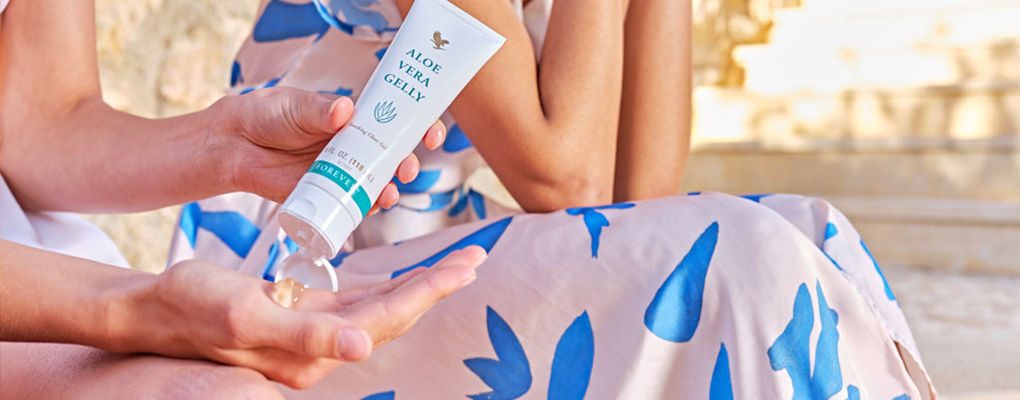You are never too young or too old to start taking care of your skin. In fact, skin care and protection should be an essential part of your health, fitness, and beauty regime. If you take care of your skin, your skin will take care of you! But with all of the lotions, creams and potions on the market, it can be difficult to know what product will work for your skin. Many products claim to remove wrinkles or heals dry skin and others claim to contain expensive ingredients that say will help improve the effects of the product. Here is a guide to the basic skin care products on the market and how you can identify which product will work best for you.

A Look at the Products
There are several types of skin care products that may make a useful additional to your daily skin care. These include cleansers, sunscreens, moisturizers, eye creams, toners, exfoliants, retinoids, herbals and skin care supplements.
Toners: Skin toners offer an extra cleansing properties to the skin that helps remove oils, dirt and makeup. But if your skin has become dry, avoid using toners or use less frequently. These skin care products often contain alcohol or acetone and it can aggravate dry or sensitive skin.
Sunscreen: Sunscreen is an essential product for the care and protection of our skin. While it is true that some exposure to sunshine is necessary for the body to synthesize vitamin D, you really only need 10-15 minutes each day to accomplish this. Excess sun exposure can cause changes in the skin cells leading to damages which can develop brown spots, skin cancer, dry skin and premature wrinkles. It doesn’t matter if your skin is fair or dark, both skin color can become damage if its being expose too much of the sun. Prevent sun damages and lower your risk of developing skin issues by applying a liberal amount of sunscreen with at least a SPF 15 cream or lotion daily. Many moisturizers come with sunscreen already included.
Retinoids: Topical Vitamin A based products called Retinoids have made significant advances in reducing the appearance of wrinkles and fine lines. They help to temporarily “plump up” wrinkle areas and diminish its visibility.
Cleansers: Cleansers help to remove dirt, debris, pollutants and perspiration that accumulate on your forever aloe vera gelly benefits the day. These cleansers may come in liquid, foam or bar form.
Eye Creams: An eye cream can help improve the condition of the fragile skin around the eyes. It helps to hydrate and protect the eye area and it may even help to minimize dark circles or temporarily tighten fine lines.
Exfoliation: The use of moisturizer and cleansers help improve the appearance of skin by sloughing off dead skin cells on the surfaces. These may also help to smooth out the skin’s appearance and even discoloration from over exposure to the sun. As we age, the skin builds up dead skin cells which makes us look older, have rough skin and wrinkles or fine lines appear. Your skin appears healthy and youthful by exfoliating daily as well as feeling cleanliness and freshness.
Supplements: Coenzyme Q10 is a naturally occurring cellular antioxidant that has shown potential in the prevention and treatment of several disease, such as heart disease, Parkinson’s Disease, diabetes and certain types of cancer. It is also utilized in many moisturizing products for wrinkles reducing properties.
Herbals: Green tea and other herbal antioxidants can be applied topically or taken orally to fight free radical damage and improve its overall appearance.
Moisturizer: Moisturizers can soothe dry skin and make wrinkles less noticeable. They come in cream, lotion and oil form. Oily based moisturizers are good for severely dry skin whereas a cream or lotion is a better choice for the face as it will leave the face feeling less heavy and greasy. To get good results, use a moisturizer right after bathing to seal moisture into your skin.
Identifying the Ingredients Label
You may be wondering why skin care products come with such a confusing labeling system. The Food and Drug Administration receives many requests each year to decipher the language of cosmetic and personal care product labels. But while the FDA empathize with consumers, there really is no way to change the labeling and keep the information accurate. The ingredients need to be listed by the chemical names because it is essentially what they are. Even though a product may be marketed by its trade name, the labeled name will provide little clue as to identify its ingredients. But despite the technical language of the personal care product’s label, it is possible to glean some useful information. Ingredient labeling must be listed in sequence based on how much is included in the formula. As a consumer, you can compare similar products by seeing where a particular ingredient falls on the list. For instance, if you have sensitive skin, you may want to avoid products that has alcohol listed as its first ingredient verse having alcohol listed as one of the last ingredients.
